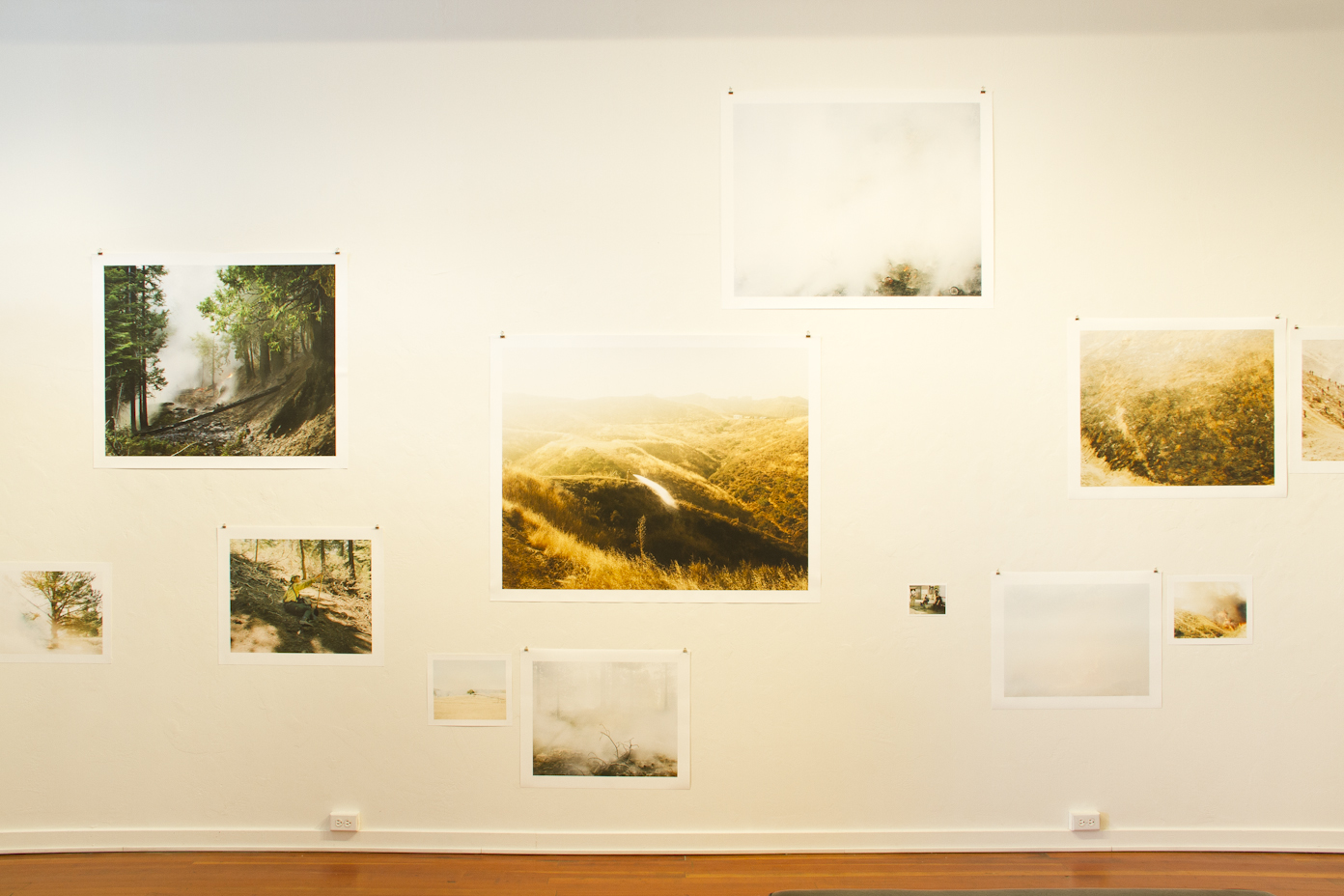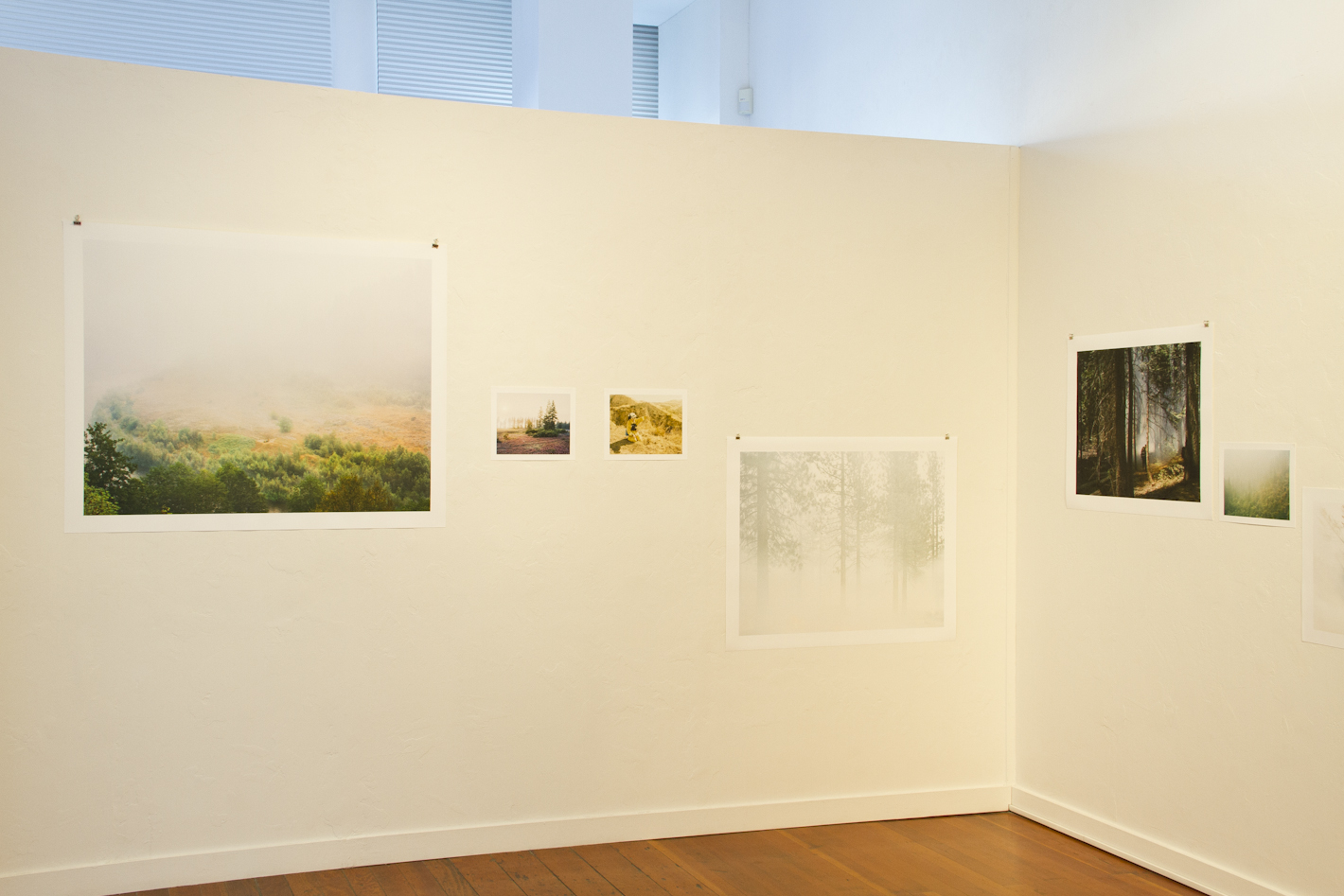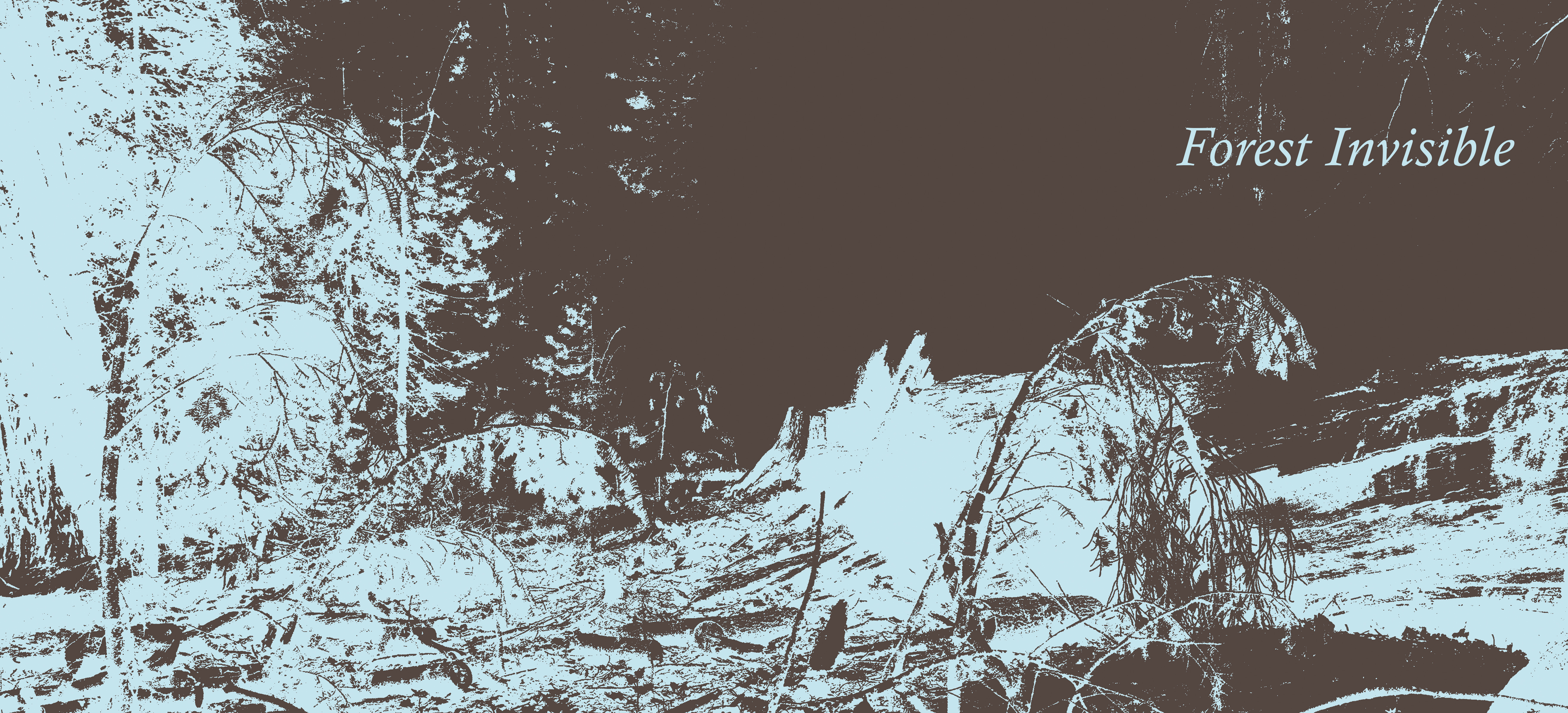

Forest Invisible is a narrative of human emotions in nature—our desire, projections and failure. As I am writing, news broke out that the current fire in and around the Yosemite National Park was caused by a fire set by a hunter who lost control of it. A narrative of nature is always a struggle between two sides: the one who wants to contain the other, and the one that proves the other wrong. But this struggle has been for so long that it is more like a dance than a war. It is an aesthetic experience.
From 2008 to 2012 I have visited these places of struggle and left with bewilderment. There are many different stories told of these fires. In those stories I see our own confusion. The past, the present, and the future come together without any order in this narrative structure and becomes a spectacular display. Not only a display of natural force, but also force of a nation–its identity and economy. Behind the flailing image of flames and smoke is our fundamental question of who we are and how we live, how we feed ourselves.
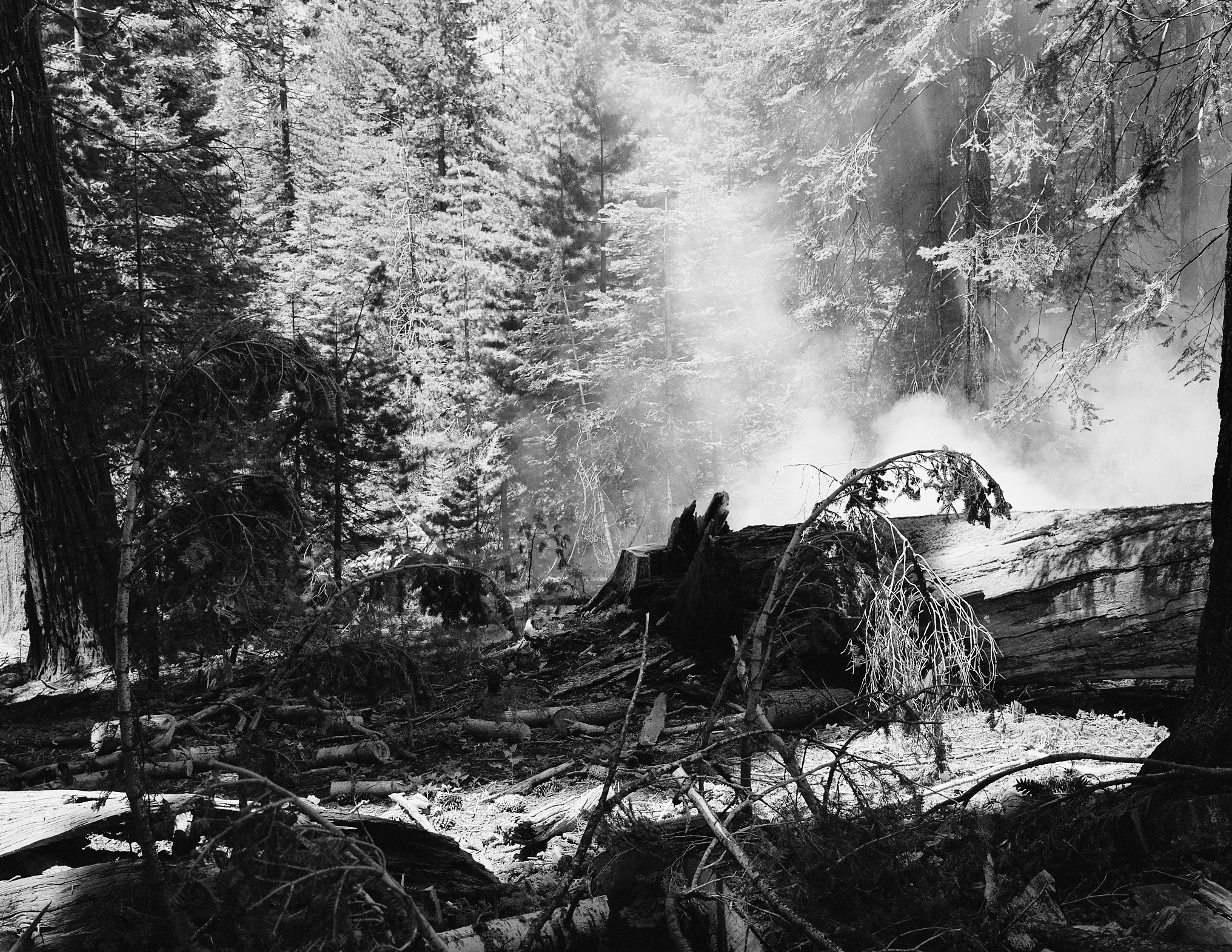
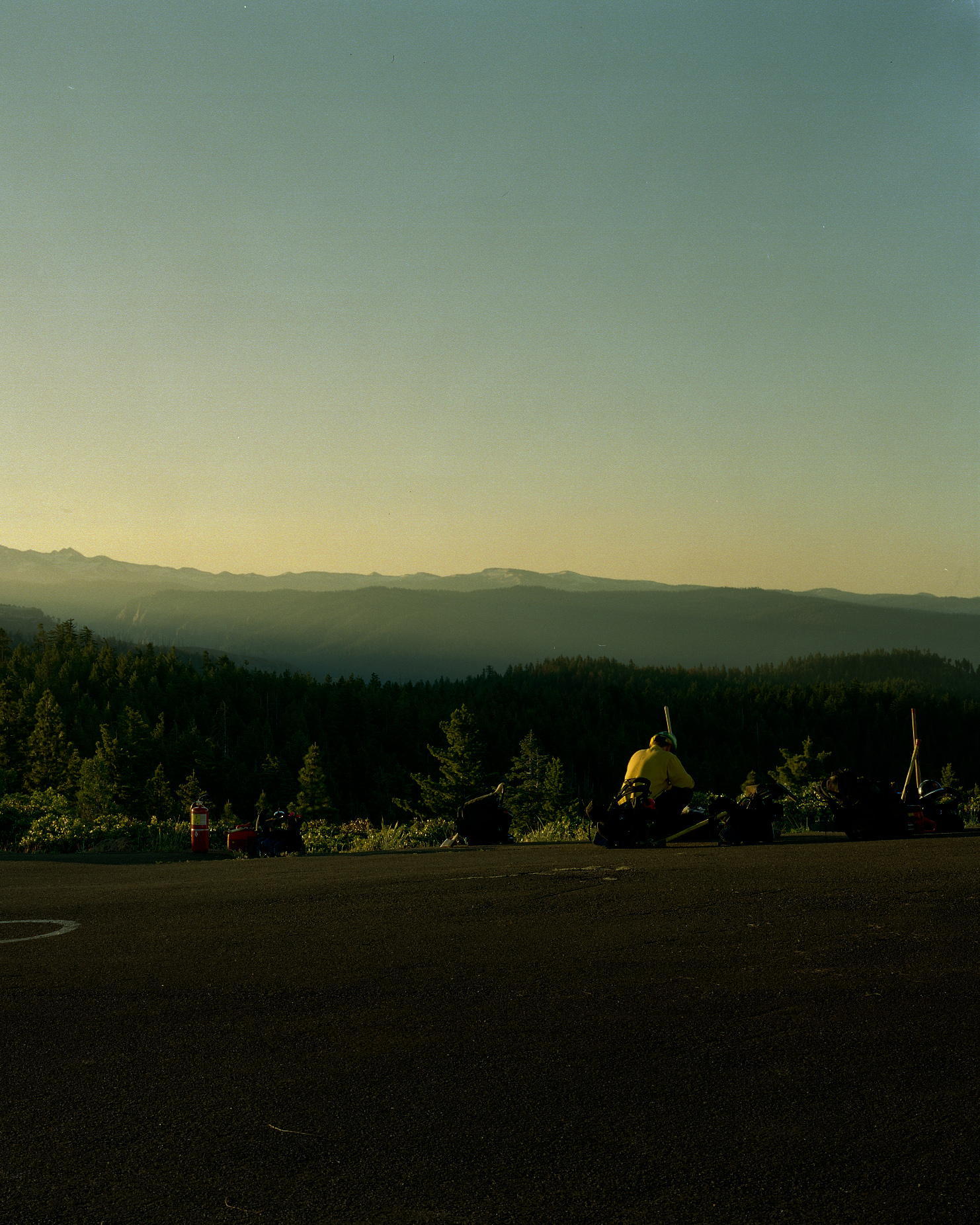








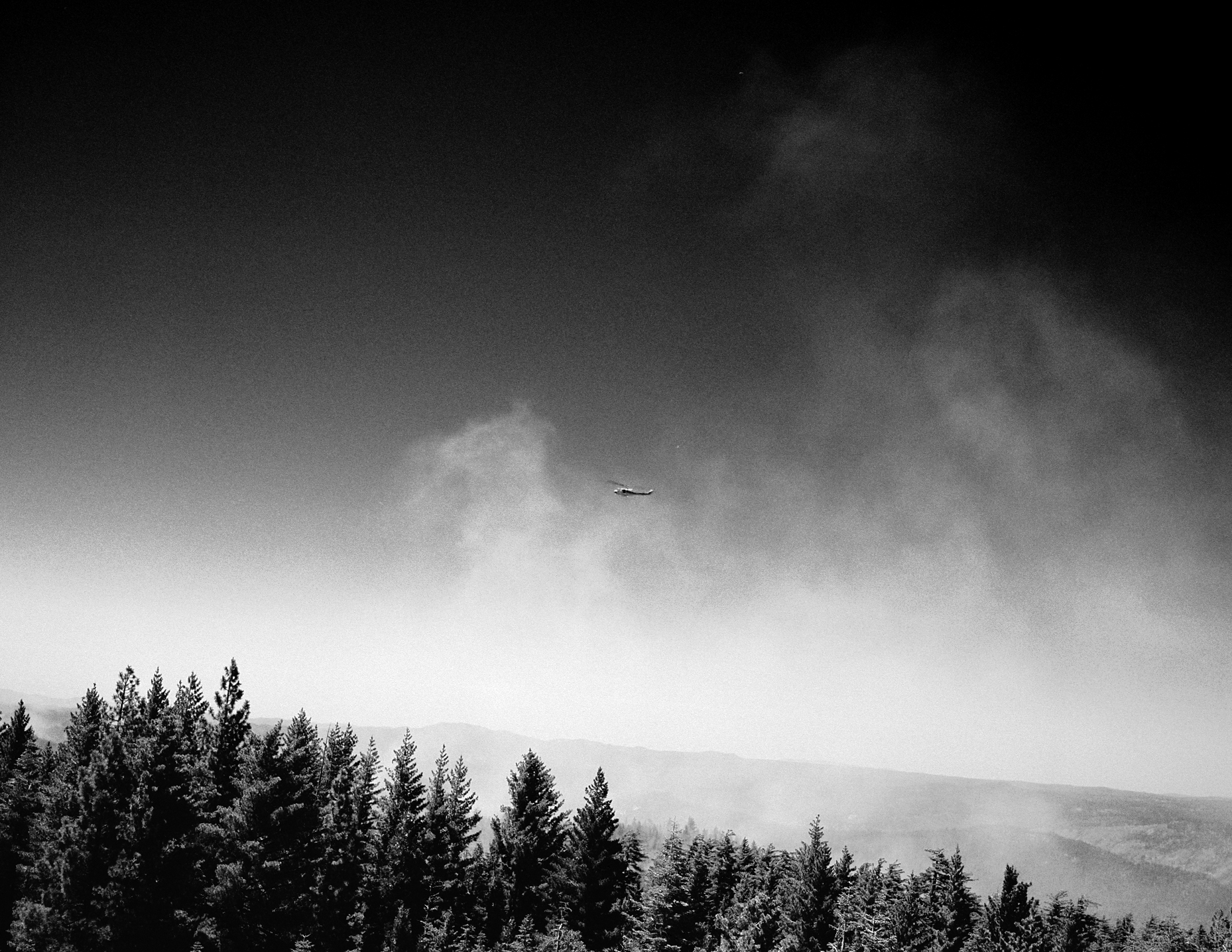




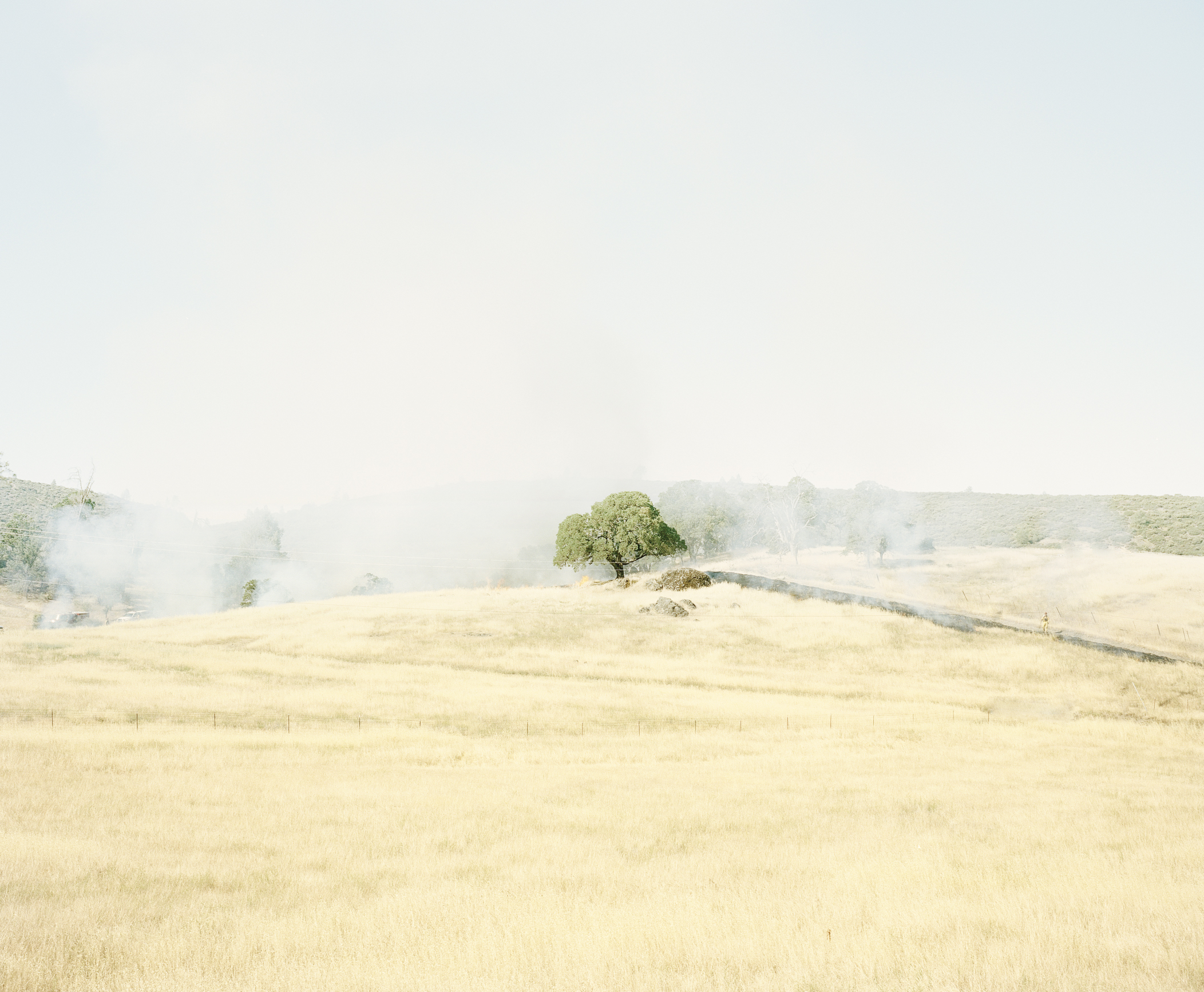
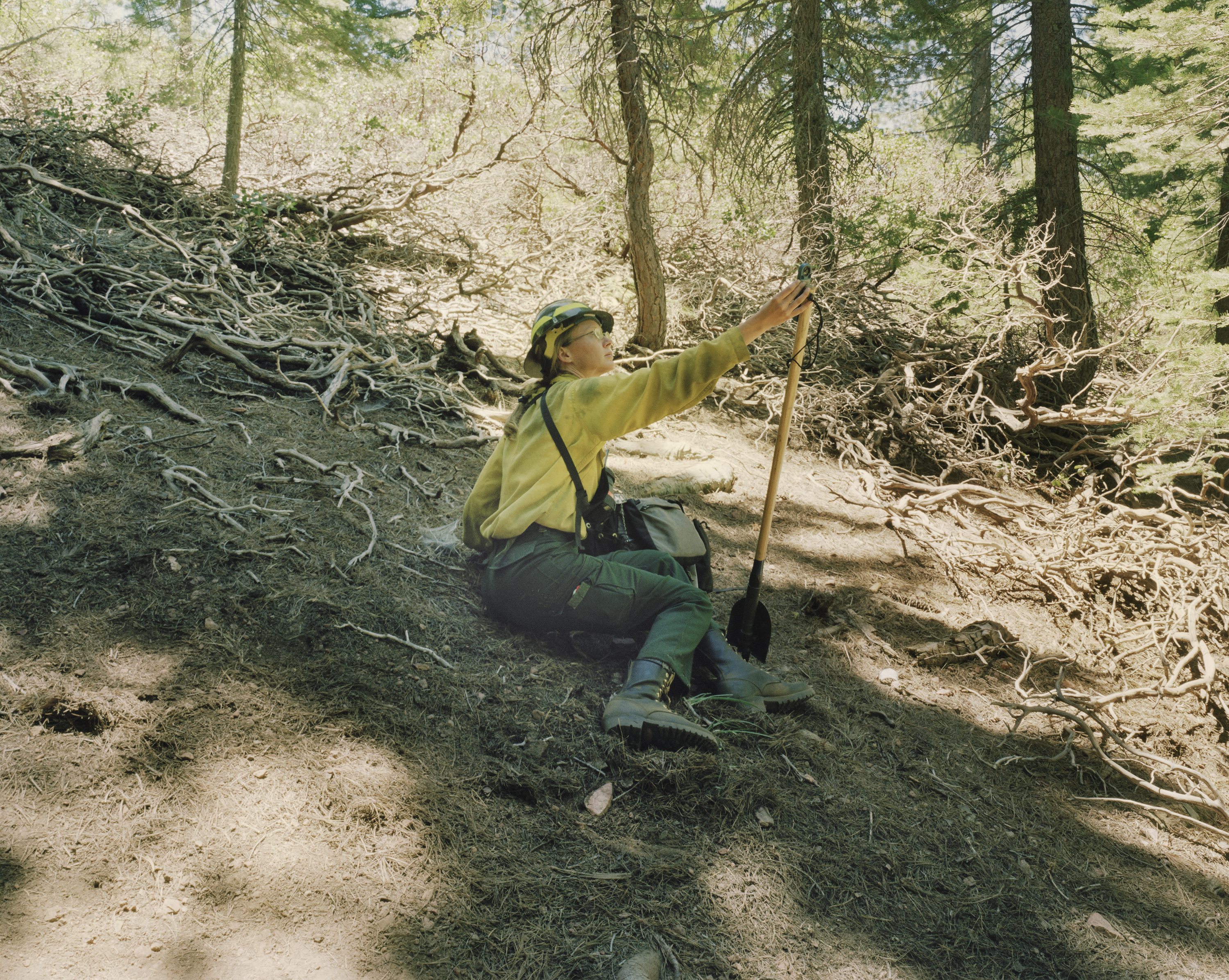

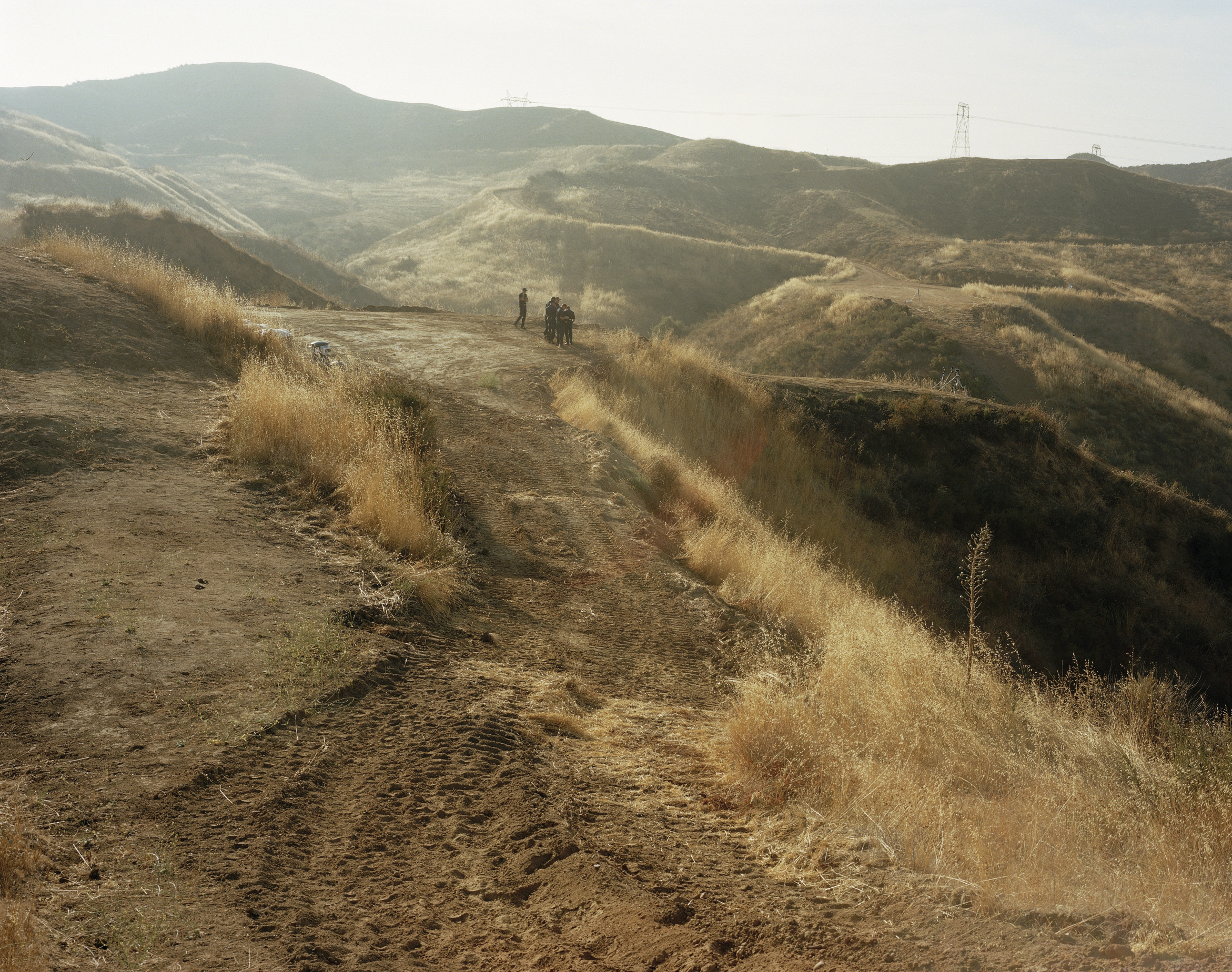


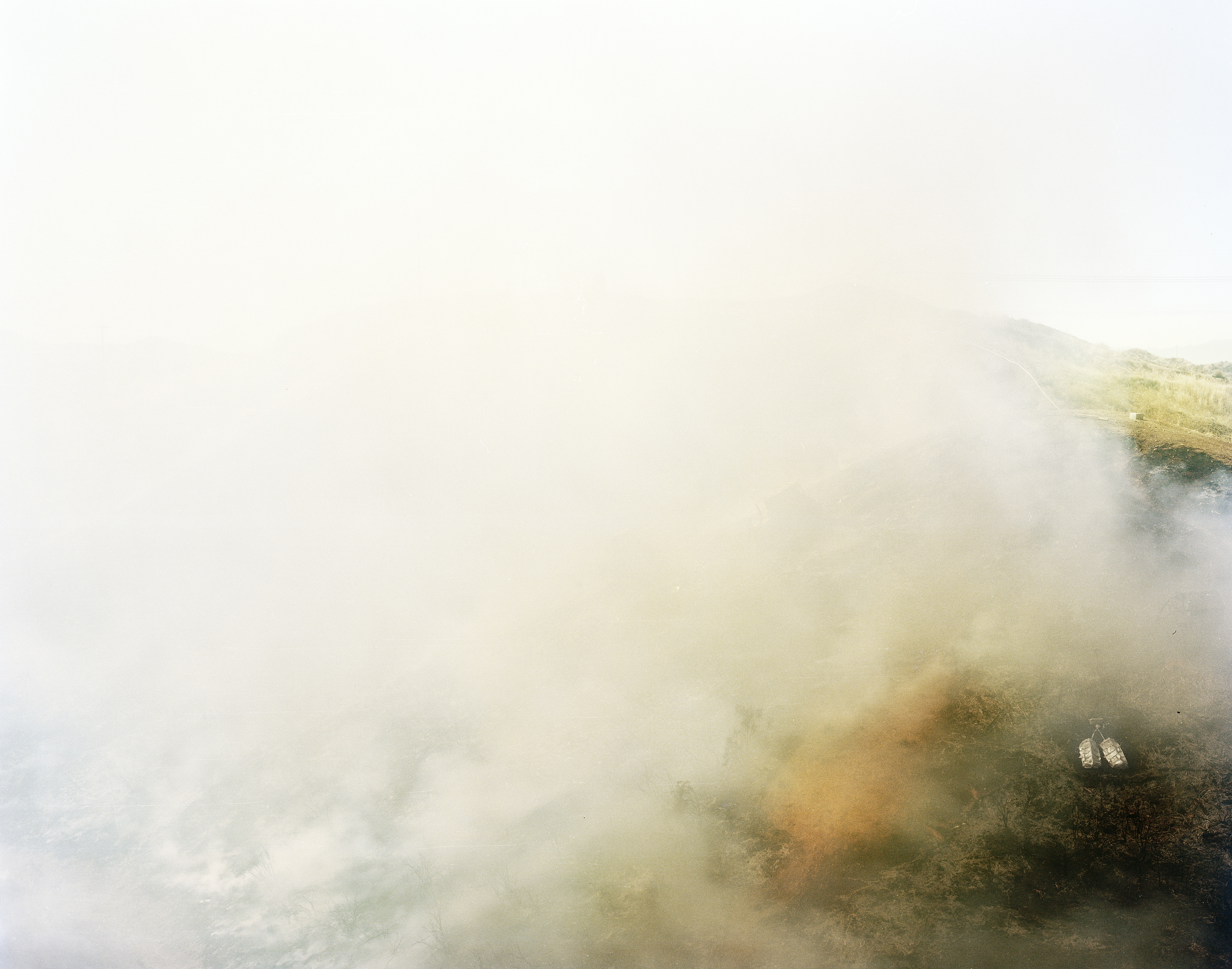



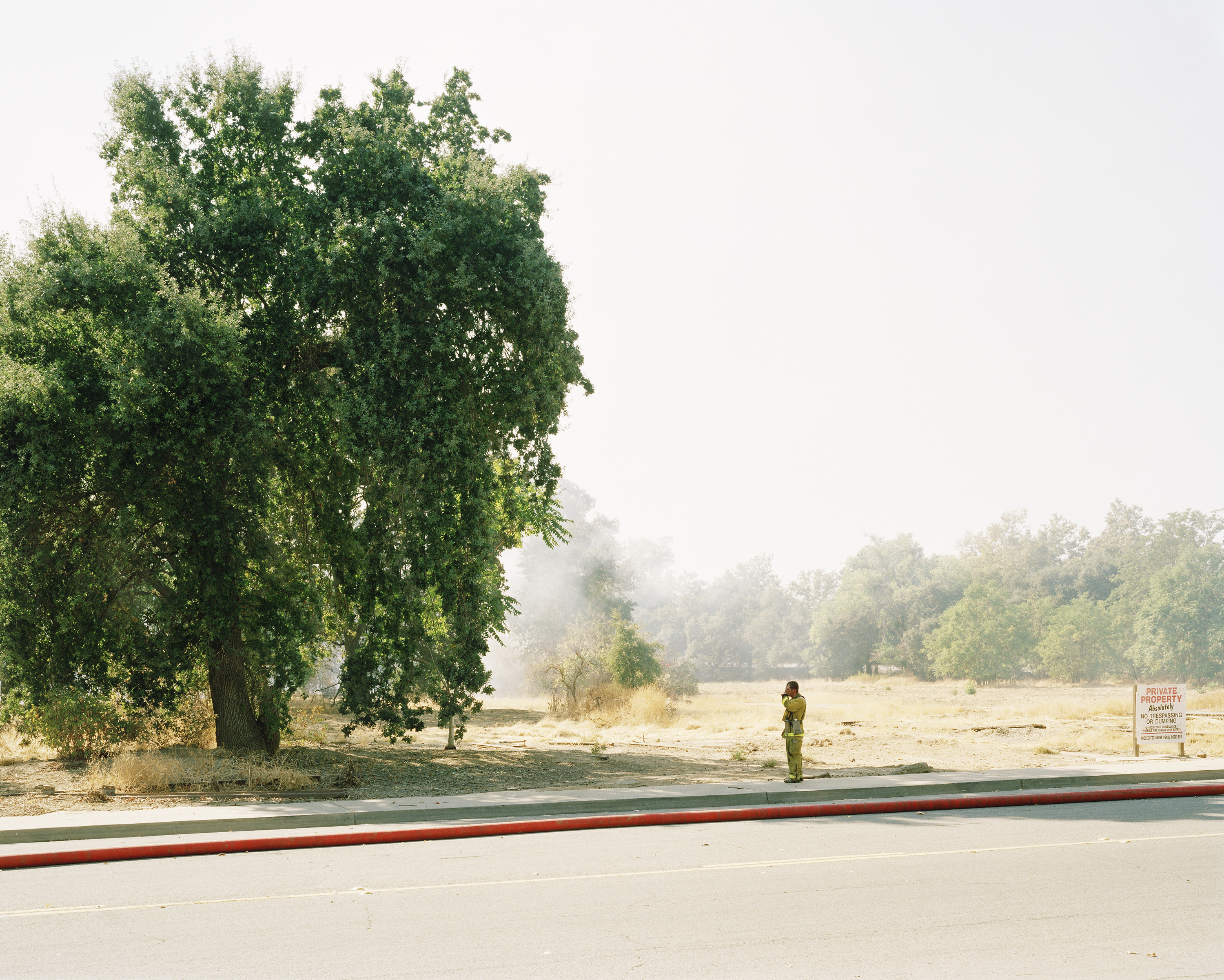


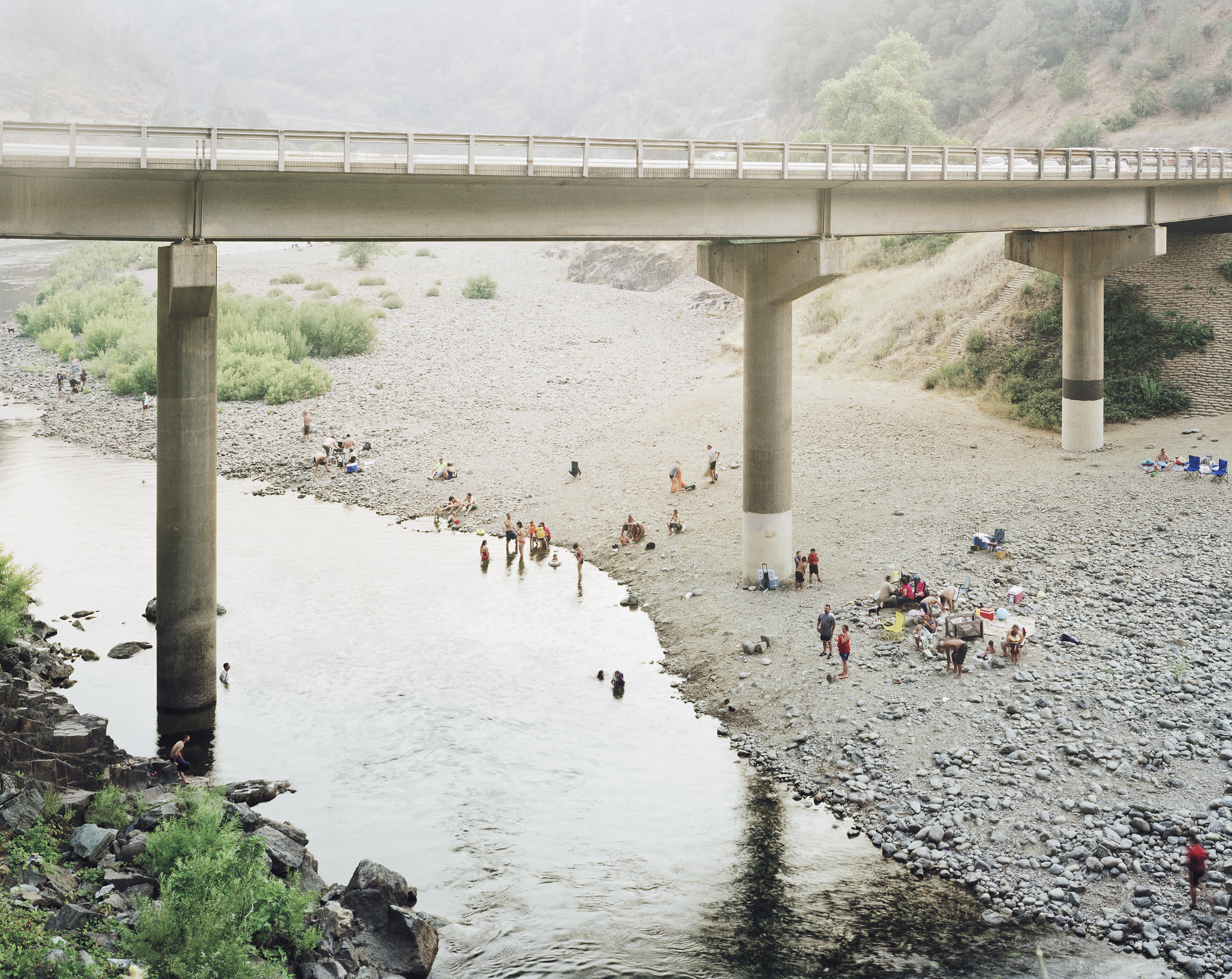





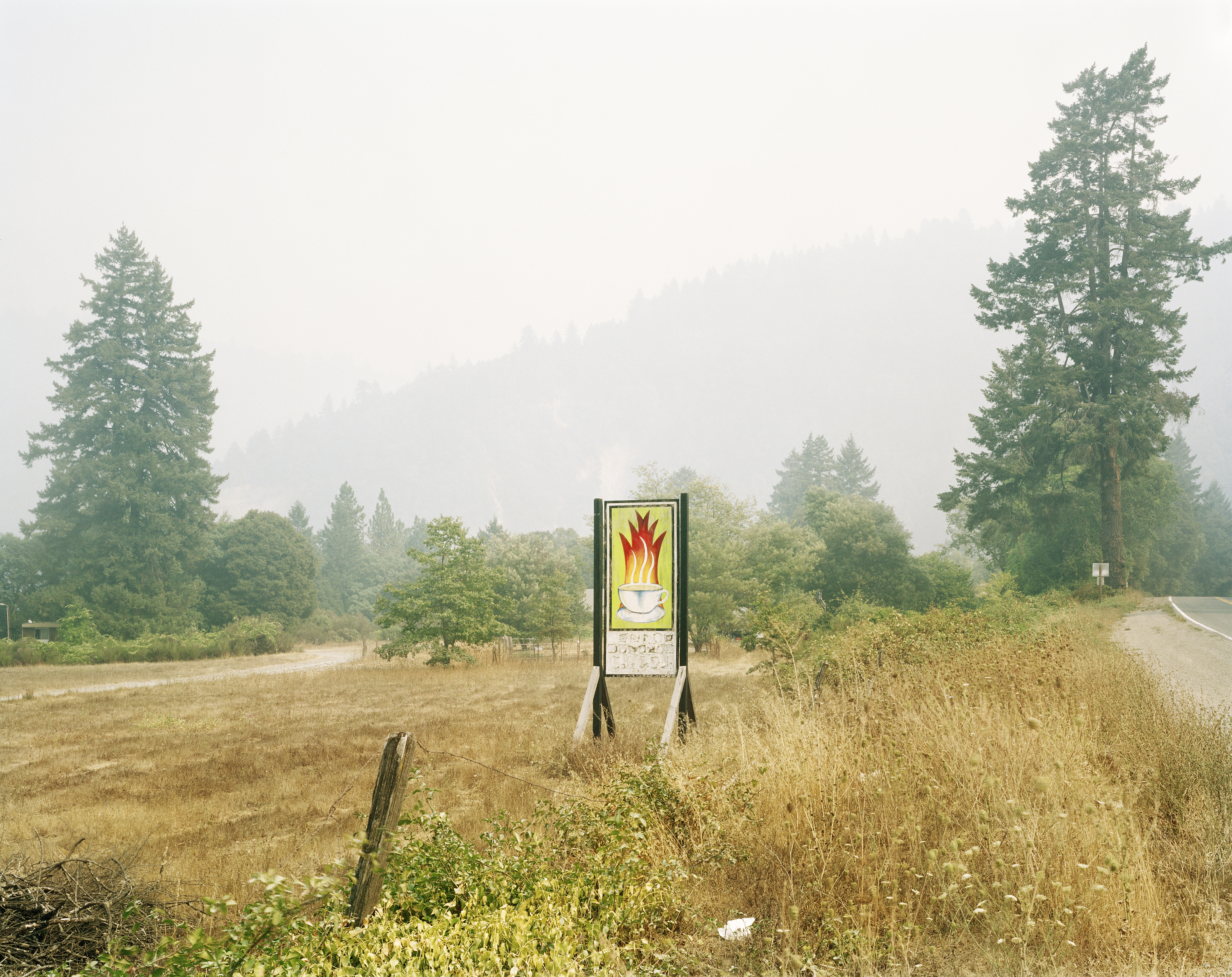












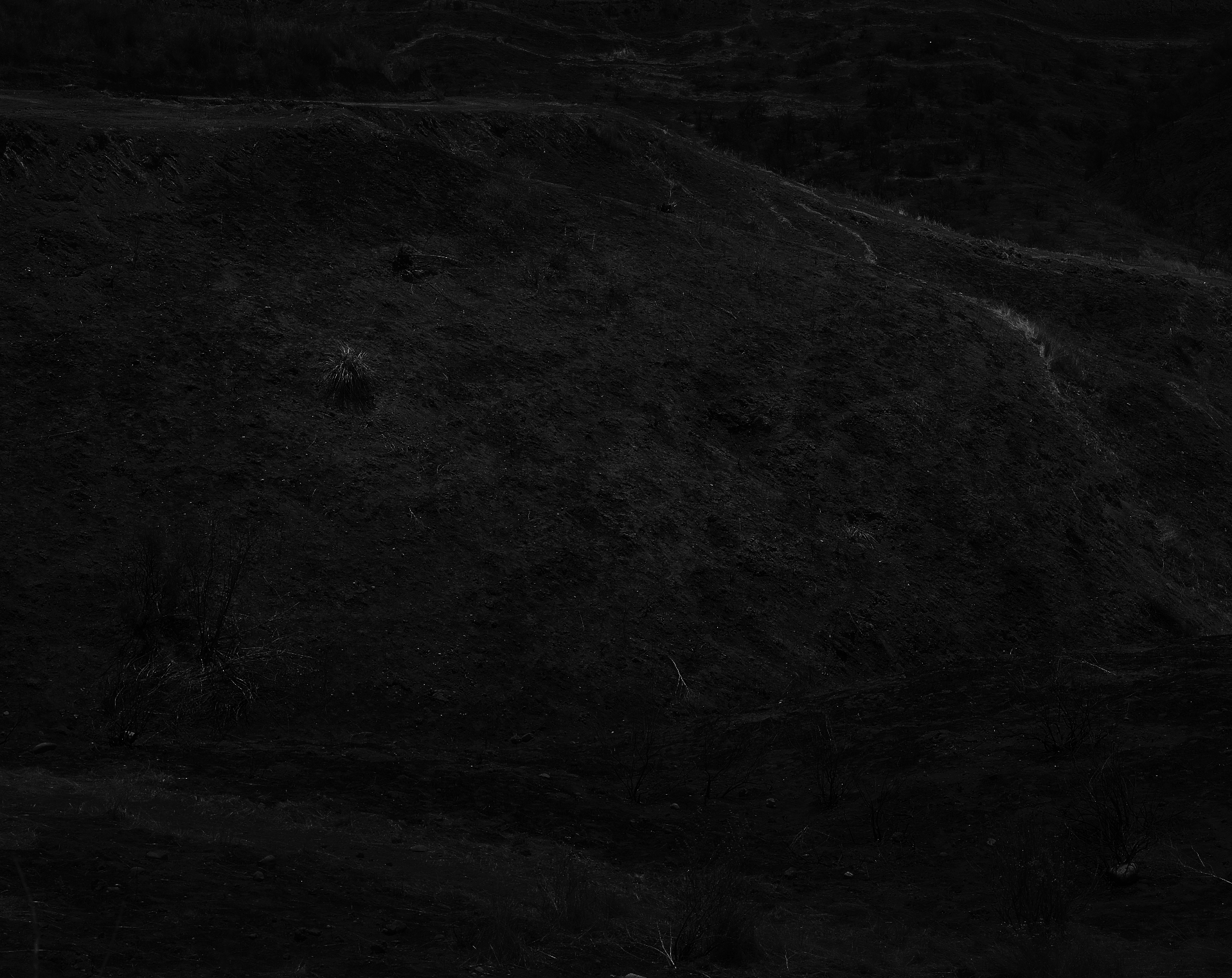
I was once invited to a controlled burn by the US Forest Service, that was being held in the area inside a prison land in Southern California where they train firefighters. Across from the highway is a Six Flags amusement park whose giant roller coaster structure was remotely visible from the top of the barren hills through the haze of the 110 degree California sun. I spent a day walking around in a heat that seemed not so much different from the fire I was supposed to be observing, no trees left to give me a shelter and one bottle of water. I was wearing a fire retardant shirt and pants, yellow on the top and green on the bottom, shades of color that failed to resemble anything natural, let alone the environment that surrounded me. Still the suit gave me a sense of comfort. I was protected by it: a strange reminder of the official term, PPE, personal protective equipment. My newly bought pair of firefighter’s boots was so stiff that my feet were already blistered everywhere a bone hit the inside of the shoe. My walk was a physical reminder of the landscape I was in. The hard inside surface of the shoe rubbed against the peeled skin over and over. When there is not much you can do about the pain, it seems to make sense. You take it as part of your existence. The scar represents your being, but at the same time you don’t want to make such a big deal out of it. It would be impossible to even consider taking the boots off and walk barefoot. The landscape was oddly familiar but utterly invisible. It is the invisibility offered by the landscape, and by fire that I am interested. Smoke is the medium through which light is made visible and it renders everything invisible. I am irresistibly attracted to its brilliance and at the same time saddened by its disappearance and by the things that disappear with it. Perhaps it explains why I often feel exhilarated with a sense of being lost in the smoke. I think of the irony of Casper David Friedrich’s Wanderer Above the Sea of Fog. We are betrayed by our desire to climb high and see everything underneath. We end up only looking at the mist, blinded by our own desire. When you step inside smoke, it is not easy to find air. The particles get through your nostrils and fill your lungs. They seem heavy inside you and it is history that weighs down your body. It is the same weight that buoyed the minds of the 19th century men like Bierstadt and Gifford. The layers of oil paint that once built the glory of an upcoming history, and the haze in many of their paintings so thick it diminishes the sun, are both stuffed in our collective lungs and immobilize us. The smoke will scatter away, but it will leave its weight for us to carry. I wonder if trees ever dream. We swim through the density of our desire and the debris of what we have become while nature, violated and gone wild, is fully awake and crackles her question to us, “What on earth do you see?” As if she already knew our loss in the thickness of our reverie.
September, 2012 Young Suh
September, 2012 Young Suh

First Street Gallery, Eureka, CA
Humboldt State University
October 2013

